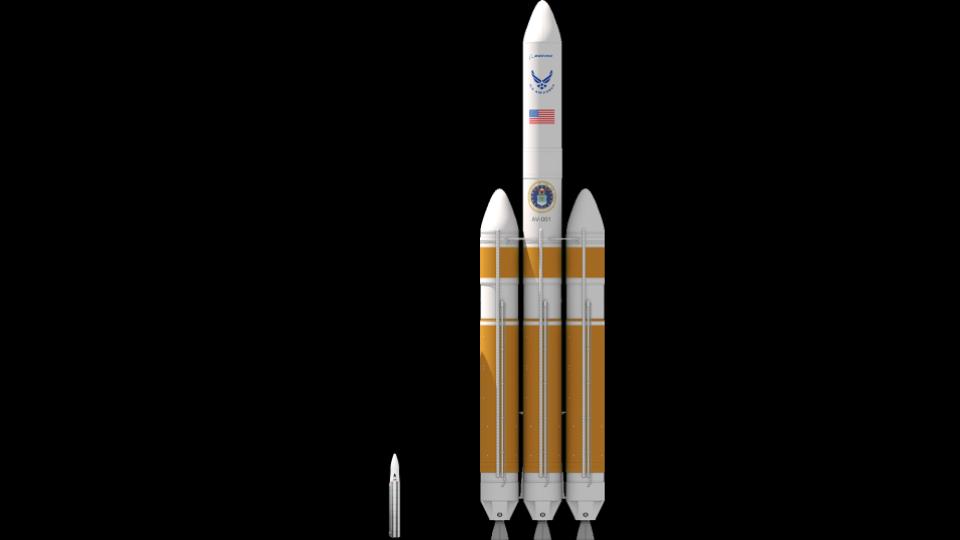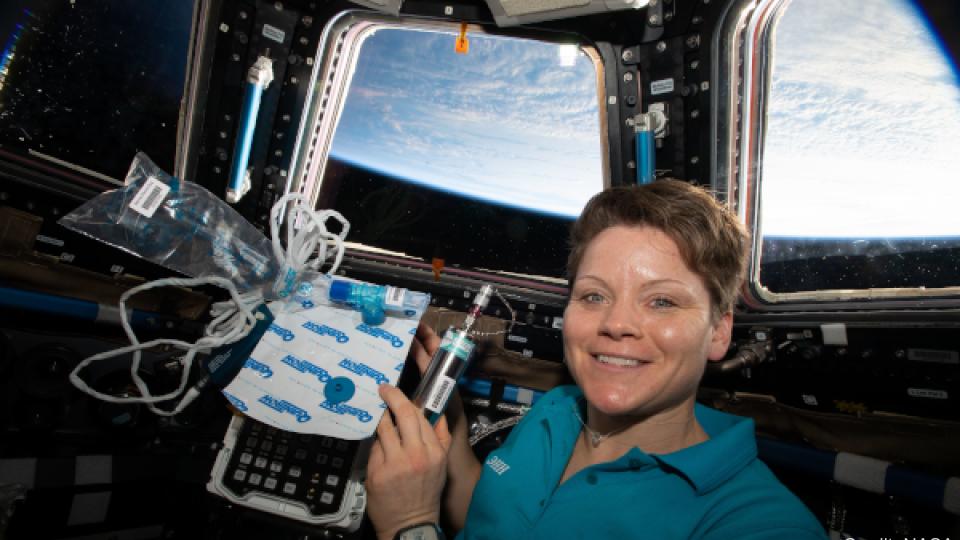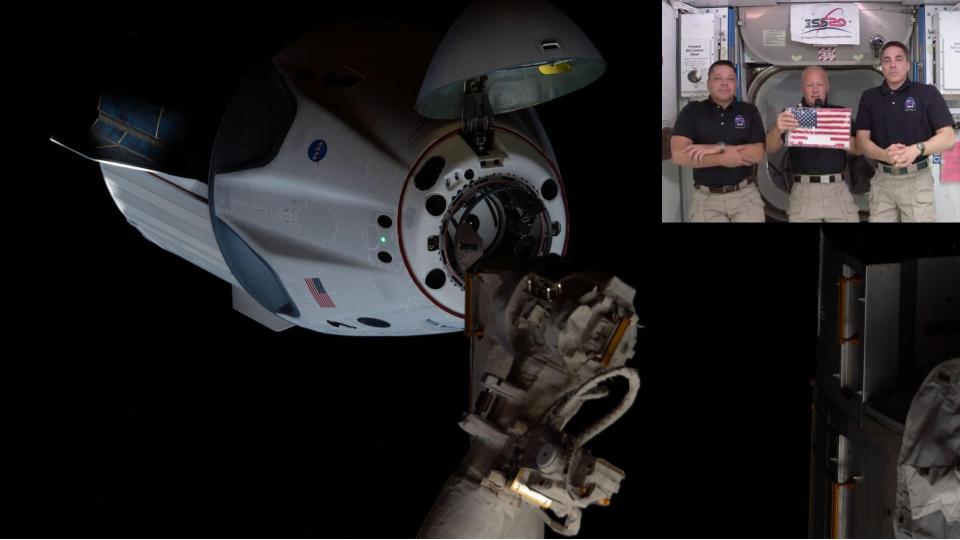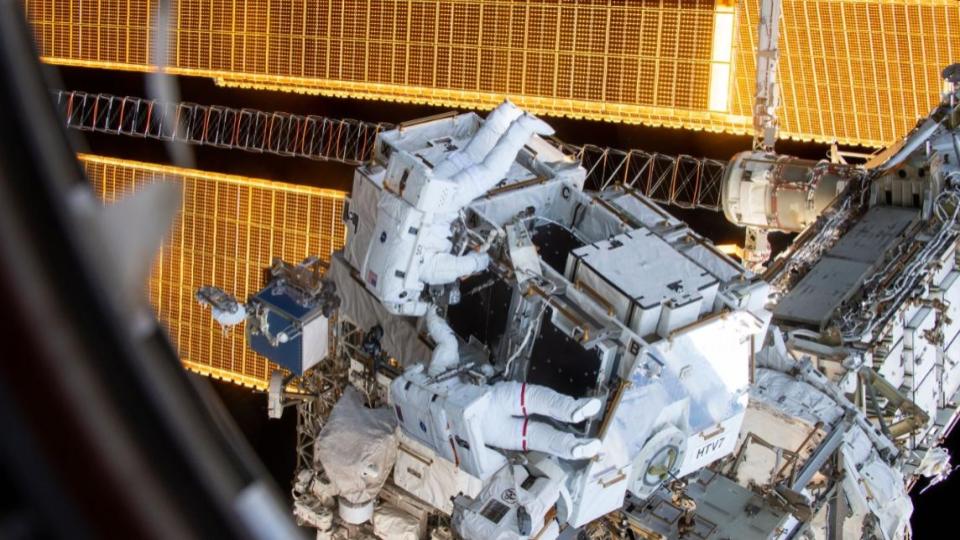Media
Summary
Join us for this week’s Rocket Roundup with host Annie Wilson as we look back at the launches and missions that happened last year, including test flights and first flights, mission launches and discoveries, and all the people in space (and their zero-gravity indicators). Plus space toilets.
Transcript
Hello, and welcome to the Daily Space for today Wednesday, January 6, 2021. I am your host Annie Wilson. Most weekdays we’re here putting science in your brain.
Usually, Wednesdays are for Rocket Roundup and today I’m going to recap a few things that happened in space last year.
Overall Stats with Maps
Despite the challenges the COVID pandemic posed for everyone, including the people who launch rockets, there were 104 successful rocket launches out of 115 total orbital launch attempts in 2020, for a success rate of 90.4%. That’s actually more rocket launches than 2019 but with a slightly lower success rate. The last time there were more than 115 orbital launches in a year was 30 years ago in 1990.

There are multiple ways to track orbital launches: the origin of the rocket, the country where the launch provider is located, or the actual location where the rocket was launched — also known as a spaceport. I use that last option and tally launches by the country where the launchpad is located. Here’s that breakdown:

China: 39
USA: 38
Russia: 8
Kazakhstan: 7
French Guiana: 7
New Zealand: 7
Japan: 4
India: 2
Iran: 2
Israel: 1
Another way to track launches is by payload destination — literally where the payload of one or more satellites is going to end up.
74 for Low Earth Orbit
17 for Geosynchronous Orbit
8 for Medium Earth Orbit
1 High Earth Orbit
4 for Heliocentric orbit — these are spacecraft that are going to another planet or to orbit the Sun
Rocket Talk

The smallest orbital rocket that reached space last year was Astra’s Rocket 3, coming in at 11.6 meters tall. To give you an idea of scale, it can be packed inside a shipping container. The idea is for the rocket to be able to be launched from just about anywhere, but so far it has only been launched out of the Kodiak Spaceport Complex in Kodiak Alaska.
The largest orbital rocket launched in 2020 was Delta 4 Heavy, a heavy launch vehicle developed by Boeing and flown by United Launch Alliance. The Delta 4 Heavy is 72 meters tall, 5 meters in diameter, and can lift 28 metric tonnes into Low Earth Orbit.
China continues to introduce new rockets to replace its aging families of hypergolic launch vehicles. The Long March 7A is essentially a Long March 7 with a 3rd stage borrowed from a Long March 3B. The first flight of the CZ-7A on March 16, 2020, failed due to an issue with the 3rd stage. Another new Chinese rocket this year was the Long March 8. This rocket is based on the Long March 7, but with a reusable first stage. It was successfully launched on December 21, 2020.
Another new Chinese rocket this year was the Kuaizhou-11, a commercially developed small launch vehicle. Its maiden launch failed when the 3rd stage did not ignite.

Finally, the Long March 5B made its first flight on May 5, 2020. The Long March 5B is essentially a Long March 5 but without its second stage. It is optimized for launching heavy payloads into Low Earth Orbit. The first flight carried a test capsule for the next generation crew capsule. The rocket’s core stage reached orbit and caused concern when it performed an uncontrolled re-entry over the Atlantic Ocean. Pieces of the rocket landed in a village in Côte’ d’Ivoire, a country on the west coast of Africa.
SpaceX’s Starship achieved several new milestones in 2020, evolving from the less-than-half size, single-engine Starhopper that “hopped” in 2019, to a pair of full-size single-engine models, SN5 and SN6, which lacked aero surfaces, and finally to the three-engine SN8 which included a full set of aero surfaces and a different alloy hull.

SN8 made a 12,500-meter test flight on December 9th. It demonstrated previously untested aerodynamic maneuvers, the most impressive of which was the belly flop. These maneuvers will be important to future Starship missions on the Moon and Mars. The test ended with an impressive explosion just as it was landing, caused by the propellant mixture going oxygen-rich due to a lack of fuel tank pressure.
People in Space

2020 saw numerous experiments conducted by astronauts on the International Space Station that generated over three hundred scientific papers published during 2020.
Some that caught my eye were:
- cookies that were an experiment for the Doubletree hotel chain
- experiments related to Parkinson’s and Alzheimer’s
- force feedback for teleoperation of rovers
- Microbes that were found on the outside of the ISS
And they installed Space Toilet 2!

2020 marked a new generation of human spaceflight, with commercial companies finally taking humans into space and returning them to earth, capturing the flag left up there by the crew of the final space shuttle mission in 2011. On May 30, SpaceX launched the Demo 2 mission carrying astronauts Bob Behnken and Doug Hurley to the ISS on a SpaceX Crew Dragon. The astronauts spent several months on the ISS contributing to station research, maintenance, and upgrades, before splashing down safely in the Gulf of Mexico on August 2nd. This marked the first splashdown of an American crewed spacecraft since Skylab 4 in 1974.
The success of this mission cleared the way for SpaceX Crew 1, which saw a Crew Dragon launch on November 15th with NASA astronauts Michael Hopkins, Shannon Walker, Victor Glover, and JAXA Astronaut Soichi Noguchi onboard. They will spend a standard six-month rotation at the ISS, returning to Earth in May 2021.

Soyuz MS-15, which was launched in late-2019, returned to Earth on April 17 carrying cosmonaut Oleg Skripochka, and astronauts Andrew Morgan and Jessica Meir.
Soyuz MS-16 launched on April 19th with cosmonauts Anatoly Ivanishin, Ivan Vagner, and astronaut Christopher Cassidy. They returned in the same capsule on Oct 22, 2020. This launch marked the first time a Soyuz spacecraft was launched on a modernized Soyuz 2.1A and the first time since 2014 that a Soyuz spacecraft was launched from Site 31 at Baikonur instead of the usual Site 1, which was not able to launch the new Soyuz 2.1A.
Soyuz MS-17 launched on October 14 with cosmonauts Sergey Kud-Sverchkov, Sergey Ryzhikov, and astronaut Kate Rubin. Notable about this launch is that it rendezvoused with the ISS after just two orbits in three hours, which is half the usual time it takes to do this.

People spent a lot of time in space in 2020, with eight astronauts and cosmonauts spending a total of 51 hours and 8 minutes doing extravehicular activities (EVAs). Chris Cassidy and Robert Behnken had the most EVA time, a total of 23 hours and 37 minutes.
The majority of the EVA’s on the ISS in 2020 was done to replace the batteries on the station’s truss system. Another EVA was done to finish repairs on the Alpha Magnetic Spectrometer, which started in 2019.
The sole Russian EVA in 2020 was done to prepare for the retirement of the Poisk module when the Nakua module launches in 2021.
SpaceX continued the trend started by Soyuz crews of taking up small toys in the capsule to serve as “zero-G indicators”.
Bob and Doug brought up a “TY Flippables Tremor” as their sons are both interested in dinosaurs.
The crew of Crew-1 chose Baby Yoda, or as he is officially called in the show, “The Child”.
Soyuz MS-17 brought up a small crocheted cosmonaut made by the wife of Cosmonaut Kud-Schverkov, while MS-16’s indicator was a toy unicorn chosen by the children of cosmonaut Oleg Skripochka.
Mission Talk

Curiosity has driven a total of 23.84 kilometers since it landed on Mars on August 6, 2012 — 3.91 kilometers just last year. Among other things, in 2020 Curiosity discovered mud minerals pointing to the existence of an ice-covered lake on Mars at some point in the past.
China’s Yutu-2 rover landed on the Moon in 2019. In February 2020, scientists announced newly discovered subsurface ejecta structures using measurements from the Ground Penetrating Radar on the rover. So far, it has traversed just over 600 meters on the lunar surface since landing in 2019, with roughly 242 meters traveled in 2020.
On November 23, China launched Chang’e 5, which landed on the moon on December 1. The robotic lander collected 1.7 kilograms of lunar soil and rock samples before leaving the Moon’s surface on December 3 and returning to Earth on December 16. The total elapsed mission time was just shy of 23 days.
This was China’s first sample-return mission, making them just the third country to return samples from the Moon, and the first lunar sample-return mission since the Soviet Union’s Luna 24 in 1976.
Other Sample Return Missions
Hayabusa2
Japan’s Hayabusa2 performed its sample collection at asteroid Ryugu on July 11, 2019, and landed in the Australian outback on December 6. JAXA’s goal was to return 0.1 grams of material from Ryugu. They exceeded this goal and actually returned 5.4 grams of asteroid soil.
OSIRIS-REx

On October 20, OSIRIS-REx conducted its Touch-and-Go Sample Acquisition Maneuver, making contact with the asteroid’s surface for 5 or 6 seconds. It collected so much material that there was concern the sample container would not be able to be properly secured for return, but happily, it was stowed successfully on October 28. OSIRIS-REx will return to Earth in 2023.
Finally, to wrap things up for 2020 here’s a quick summary of satellites:
Total satellites humans put into orbit: 1231 (includes those launched from other in-orbit craft, such as the ISS)
Total satellites from launches: 1196
Total Starlinks (this year): 833
And it wouldn’t be a Rocket Roundup without a space toilet update. Currently, there are five toilets in space: three on the ISS, one on the Crew Dragon, and one on the Soyuz. And there were two toilets burned up in space in 2020 during the reentries of Soyuz MS-15 and MS-16.
Your random space fact for the week is that Saturn’s moon, Mimas, looks like the Death Star from Star Wars.
Learn More
- 2020 in Spaceflight (Wikipedia)
Rocket Talk
- Astra Rocket info page (Gunter’s Space Page)
- Delta-4 info page (Gunter’s Space Page)
- China announces failure in first launch of new Long March 7A rocket (Spaceflight Now)
- China’s Long March 8 rocket successful in debut launch (Spaceflight Now)
- Kuaizhou-11 fails during maiden launch (NASA Spaceflight)
- China’s first Long March 5B rocket launches on crew capsule test flight (Spaceflight Now)
- An out-of-control Chinese rocket may have dumped debris in Africa after falling from space (The Verge)
- China’s massive Long March 5B’s rocket falls out of orbit over Atlantic Ocean (Spaceflight Now)
- From hops to hopes – Starship SN8 advances test program into the next phase (NASA Spaceflight)
People in Space
- What We Learned This Year from Space Station Science (NASA)
- Soyuz-TMA info page (Gunter’s Space Page)
- Soyuz crew docks with International Space Station (Spaceflight Now)
- 2020 Spacewalks (Wikipedia)
- Russia’s Soyuz manned spacecraft blasts off on ultrafast flight to ISS (TASS)
- Toy unicorn chosen as zero-gravity indicator for next mission to ISS (TASS)
Mission Talk
- NASA’s Curiosity Rover Finds Clues to Chilly Ancient Mars Buried in Rocks (NASA)
- “The Moon’s farside shallow subsurface structure unveiled by Chang’E-4 Lunar Penetrating Radar,” Chunlai Li et al., 2020 February 26, Science Advances
- Chang’e 5 portal (CNSA)
- Image of the re-entry capsule fireball (JAXA)
- Chinese probe completes sample collection work on lunar surface (Spaceflight Now)
- OSIRIS-REx TAGS Asteroid Bennu (OSIRIS-REx)
- NASA’s OSIRIS-REx Spacecraft Collects Significant Amount of Asteroid Bennu (OSIRIS-REx)
- NASA’s OSIRIS-REx Successfully Stows Sample of Asteroid Bennu (OSIRIS-REx)
Credits
Host: Annie Wilson
Writers: Dave Ballard, Gordon Dewis, Beth Johnson, Erik Madaus, and Annie Wilson
Audio and Video Editing: Ally Pelphrey
Content Editing by Beth Johnson
Executive Producer: Pamela Gay
Intro and Outro music by Kevin MacLeod, https://incompetech.com/music/


 We record most shows live, on Twitch. Follow us today to get alerts when we go live.
We record most shows live, on Twitch. Follow us today to get alerts when we go live.